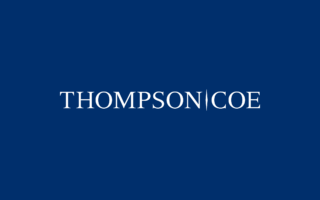Property Insurers: Beware Getting Stuck In Texas State Court
By Harrison H. Yoss • May 17, 2019 • In Law360
Law360 (May 16, 2019, 2:57 PM EDT) —
To curb abusive lawsuits and litigation tactics against property insurers (especially out-of-state carriers), the Texas legislature created Chapter 542A of the Texas Insurance Code, which went into effect on Sept. 1, 2017. Since that time, both state and federal courts in Texas have considered what effect the new provisions have on Texas law. However, one area that is still being considered by federal courts in Texas relates to the issue of removal following an election of liability under Section 542A.006.
Election of Legal Responsibility
Prior to the adoption of Chapter 542A, one abusive litigation tactic regularly employed by policyholders (or at least their counsel) in first-party property cases against out-of-state carriers was to also sue a local independent adjuster for the sole purpose of defeating diversity jurisdiction. In adopting Chapter 542A, however, the Texas legislature took steps to curb this practice by allowing carriers to “elect to accept whatever liability an agent might have to the claimant for the agents acts or omissions related to the claim by providing written notice to the claimant.”[1]
The Texas legislature broadly defined “agent” as “an employee, agent, representative, or adjuster who performs any act on behalf of an insurer.”[2] Additionally, the Texas legislature expressly provided that an insurer could make this election either presuit or after suit has already been filed. If an insurer makes this election before suit is filed, “no cause of action exists against the agent related to the claimant’s claim.”[3] If the claimant then proceeds to file suit, the statute mandates dismissal of the action with prejudice.[4] When an election occurs after suit has been filed, the Texas Insurance Code still dictates “the court shall dismiss that action with prejudice.”[5]
Simply put, the Texas Insurance Code mandates the same result, i.e., dismissal with prejudice, whether the election occurs presuit or after suit has been filed.
Removal to Federal Court
Federal courts have diversity jurisdiction when a suit involves a controversy between diverse parties and the amount in controversy exceeds $75,000, exclusive of interest and costs.[6] When these criteria are met, an out-of-state defendant may remove the case to federal court. There are, however, two mutually exclusive 30-day periods when removal can occur.
First, the case may be removed within 30 days of when the defendant receives the initial pleading, if it is removable on its face.[7] Second, if the case is not removable on the face of the pleading, it may be removed within 30 days after the defendant receives “a copy of an amended pleading, motion, order or other paper from which it may first be ascertained that the case is one which is or has become removable.”[8] Additionally, removal under this second period cannot occur more than one year after commencement of the action.[9] Unfortunately, courts have restricted this second period under a judge-made rule to require that it be predicated on a voluntary act of the plaintiff, i.e., the “voluntary-involuntary rule.”
Under the voluntary-involuntary rule, “an action nonremovable when commenced may become removable thereafter only by the voluntary act of the plaintiff.”[10] The voluntary-involuntary rule was created in Powers v. Chesapeake & O. Ry., 169 U.S. 92 (1898) and has been reaffirmed since. As explained by the United States Court of Appeals for the Fifth Circuit in Weems v. Louis Dreyfus Corp., the purpose of the voluntary-involuntary rule is to:
prevent[] removal of those cases in which the issue of the resident defendant’s dismissal has not been finally determined in the state courts. This avoids the duplication and expense which would result if a resident defendant was dismissed on an appealable ground, the nonresident was permitted to remove, and the plaintiff then obtained a reversal of the dismissal in the state appellate courts. On the other hand, that danger does not arise where a plaintiff voluntarily drops a resident defendant since appeal then is not available, and the elimination of the resident defendant from the case is final.[11]
A long-recognized exception to the voluntary-involuntary rule, however, is fraudulent or improper joinder.[12] A party may establish improper joinder by showing (1) actual fraud in the pleading of jurisdictional facts or (2) a plaintiff’s inability to establish a state-law claim against the nondiverse defendant.[13] To determine “whether the complaint states a claim under state law against the in-state defendant,” courts “may conduct a Rule 12(b)(6)-type analysis, looking initially at the allegations of the complaint.”[14]
Removal After an Election Under Section 542A.006
As discussed above, Section 542A.006(b) is clear that a presuit election means that no causes of action exist against the agent related to the claimant’s claim. When a presuit election is made, the agent should not be named as a defendant and the initial pleading against an out-of-state carrier should be removable on its face. Accordingly, the carrier must remove the case within the first period, i.e., within 30 days of receipt of the initial pleading.
Even if the in-state agent is named as a defendant after a presuit election is made, the case is still removable on its face because no causes of action could be sustained against that agent. In such cases, the carrier should assert improper joinder in light of its presuit election when removing the case.
If suit is filed before an election of legal responsibility is made, an election is still proper and Section 542A.006(c) still mandates dismissal with prejudice. Thus, no viable state-law causes of action exist against the in-state defendant. The viability of removal after a post-filing election of legal responsibility has recently been considered by judges in the Southern, Eastern, and Western Districts of Texas, and the courts have generally adopted two divergent approaches regarding the propriety of removal after a post-filing election of legal responsibility.
Under the first approach, which was adopted in Electro Grafix, Corp. v. Acadia Insurance Co.,[15] Flores v. Allstate Vehicle & Prop. Insurance Co.,[16] Yan Qing Jiang v. Travelers Home & Marine Insurance Co.,[17] and Horton v. Allstate Vehicle & Prop. Insurance Co.,[18] the election removes all viable causes of action against the in-state agent. Thus, “dismissal under § 542A.006 is appropriately viewed as a dismissal for improper joinder and thus [a] state court’s dismissal order is tantamount to a dismissal for improper joinder.”[19]
The widest reading of this approach could permit removal within the second period (up to one year), assuming removal occurred within 30 days of the state court dismissing the in-state defendant. Notably, this approach would also encourage state courts to rule on dismissal of the agent prior to removal to federal court and has the added benefit of recognizing the finality of a dismissal based on an election under Section 542A.006, which would fit well with the purpose of the voluntary-involuntary rule outlined in Weems.
A narrower interpretation of this approach could also permit the election to be filed within the first removal period, thus permitting the defendant to argue improper joinder on the initial pleading’s face based on the post-filing election, assuming it occurred within the initial 30-day period and prior to removal.
The second approach, adopted by the courts in Massey v. Allstate Vehicle & Prop. Insurance Co.,[20] Stephens v. Safeco Insurance Co. of Indiana,[21] and River of Life Assembly of God v. Church Mut. Insurance Co.,[22] however, focuses on the propriety of the joinder when suit was filed. Under this approach, if the election did not occur presuit, then the joinder was proper at the time of filing and the initial pleading was neither removable on its face nor proper under the voluntary-involuntary rule.[23] In short, the second approach requires the election to occur presuit in order for an out-of-state carrier to ever be able to remove a case to federal court.
Because of the purpose of the voluntary-involuntary rule and the finality of the agents’ dismissal, the first approach is most persuasive. Moreover, barring removal under the voluntary-involuntary rule when an election is made post-filing would circumvent the purpose of Section 542A.006 and induce policyholders to actually ignore the notice requirements of both the Texas Insurance Code and Texas Deceptive Trade Practices-Consumer Protection Act.
For example, when policyholders fail to provide presuit notice, or if their notices are insufficient, courts have held that the proper remedy is abatement.[24] But, if an election must occur prior to a policyholder filing suit, policyholders could deprive out-of-state carriers from ever having the opportunity to remove cases to federal court by simply never making their statutorily required presuit notices and accepting an abatement after suit is filed. Accordingly, the second approach outlined above creates the perverse incentive for plaintiffs to ignore multiple Texas statutes and circumvent the Texas legislature.
As outlined above, Texas federal courts have so far adopted different approaches regarding removal following a post-suit election. Notably, some of the decisions adopting the second approach were cases where the defendant did not respond to the plaintiff’s motion for remand or the court determined that the improper joinder argument was untimely.[25] Accordingly, it is unclear whether the courts may have been persuaded by additional arguments from the defendants in those cases. Nevertheless, the Fifth Circuit has yet to resolve the split, and the differing approaches adopted by various federal courts in Texas must be considered by out-of-state carriers and their counsel.
Moving Forward
Until this split is resolved, out-of-state carriers should consider and plan for the abridged timeline contemplated in the second approach outlined above. Accordingly, out-of-state carriers need to make any election of legal responsibility under Section 542A.006 (at least to ensure complete diversity) before suit is filed, i.e., within 60 days of the date of the policyholder’s presuit notice. This requires a quick, but thoughtful, decision by the carrier based on a complete review of the claim file. Accordingly, timely retention of outside counsel is important as soon as any presuit notice is received, especially in bad faith cases or when violations under the Deceptive Trade Practices Act are alleged, since treble damages are possible.
Once a decision is made to elect legal responsibility of an agent, notice should be quickly sent to the policyholder. This notice is relatively straightforward but should fit into an overall litigation strategy adopted by the carrier and its counsel. Again, outside counsel can assist the carrier in providing notice to the policyholder and informing the agent.
In conclusion, as with other aspects of Chapter 542A, Texas courts are still determining how an election under Section 542A.006 will be treated with regards to removal. As outlined above, there are two primarily approaches that have been adopted by Texas federal district courts so far, but these approaches lead to divergent results. It is almost certain that the Fifth Circuit will sooner or later consider this issue. Until that time, however, it is important that out-of-state carriers make timely decisions on whether to elect legal responsibility for their agents under Section 542A.006 before suit is filed or risk being stranded in state court.
[1] Tex. Ins. Code § 542A.006(a).
[2] Tex. Ins. Code § 542A.001(1).
[3] Tex. Ins. Code § 542A.006(b).
[4] Id.
[5] Tex. Ins. Code § 542A.006(c).
[6] See 28 U.S.C. §1332(a).
[7] See 28 U.S.C. § 1446(b)(1).
[8] See 28 U.S.C. § 1446(b)(3).
[9] 28 U.S.C. § 1446(c).
[10] Weems v. Louis Dreyfus Corp. , 380 F.2d 545, 547 (5th Cir. 1967).
[11] Weems, 380 F.2d at 546 (internal citations and quotation marks omitted).
[12] Crockett v. R.J. Reynolds Tobacco Co. , 436 F.3d 529, 532 (5th Cir. 2006).
[13] Smallwood v. Ill. Cent. R.R. Co. , 385 F.3d 568, 574 (5th Cir. 2004) (en banc).
[14] Smallwood, 385 F.3d at 573.
[15] No. SA-18-CA-589-XR, 2018 WL 3865416 (W.D. Tex. Aug. 14, 2018) (Rodriguez, J.).
[16] No. SA-18-CV-742-XR, 2018 WL 5695553 (W.D. Tex. Oct. 31, 2018) (Rodriguez, J.).
[17] No. 1:18-CV-758-RP, 2018 WL 6201954 (W.D. Tex. Nov. 28, 2018) (Pitman, J.).
[18] No. 5-19-CV-00140-FB-RBF, 2019 WL 1552494, at *3 (W.D. Tex. Apr. 9, 2019) (Farrer, J.).
[19] Flores, 2018 WL 5695553, at *5.
[20] No. CV H-18-1144, 2018 WL 3017431 (S.D. Tex. June 18, 2018) (Miller, J.)
[21] No. 4:18-CV-00595, 2019 WL 109395 (E.D. Tex. Jan. 4, 2019) (Mazzant, J.)
[22] No. 1:19-CV-49-RP, 2019 WL 1767339 (W.D. Tex. Apr. 22, 2019) (Pitman, J.)
[23] River, 2019 WL 1767339, at *2; see Massey, 2018 WL 3017431, at *3; Safeco, 2019 WL 109395, at *7.
[24] See Oppenheimer v. Prudential Sec., Inc. , 94 F.3d 189, 194 (5th Cir. 1996).
[25] See, e.g., Safeco, 2019 WL 109395, at *2 n.2; Massey, 2018 WL 3017431, at *4 n.3.
Read more at: https://www.law360.com/appellate/articles/1158827??copied=1






